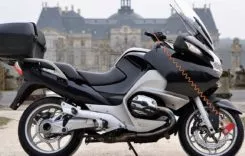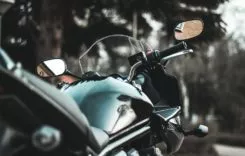Truth On The Dyno
Dyno Truths
Words and Photos: Joe Kress
It isn’t always about the numbers, where the biggest number wins. Or at least it shouldn’t be. We’re talking about dyno tuning here or, more specifically, the results of dyno tuning. Yet riders constantly ask the techs at Speed’s Performance Plus—guys who have dyno tuned bikes for decades, setting up literally thousands upon thousands of them—how much horsepower they’re going to come away with after a dyno tune. They’re looking for those numbers, those peak horsepower and torque figures reputed to be found only on a dyno. And that, says SPP’s Jamie Hanson, is exactly the wrong question. “It’s not the way to look at what a dyno tune is and what a dynamometer can deliver,” he says. And trust him: It’s a lot more than just those big numbers.
“While riders are certainly interested in peak horsepower,” Jamie goes on to explain, “when it comes down to it most would rather have a great-running bike.” That means a smooth and powerful engine with instant throttle response and strong passing performance, a bike that stays cool in city traffic, cruises beautifully out on the open road, and turns in decent fuel mileage. And day in day out that’s going to be far more preferable than some big number coming at the expense of everything else, and that’s what a real dyno tune, one concentrating on more than just numbers, can deliver.
Simply put, the dynamometer is just a tool, but in the hands of someone who knows what he’s doing with it and used in conjunction with another powerful tool like the Dynojet Power Commander there’s plenty that can be done to optimize a bike’s overall performance. And, yes, probably bump up the numbers. But more importantly, with a careful dyno you’ll get the most from whatever equipment might be on that bike, like pipes and high-flow filters, and you’ll really dial in the power delivery. And it’s the power delivery, where in the rpm range the power is being made, that really makes the difference. Gains found on a dyno for all this can be substantial too, especially in all the newfound power, torque, and rideability down in the rpm range where most riding is actually done. “And that’s well below the wide-open-throttle peak,” Jamie notes. Gains at the top end, that bragging-rights number everyone’s so focused on? Sure, it’ll probably be there, but that’s not the point.
Most often an unturned bike will have an air-fuel ratio that’s all over the place: rich where it should be lean and lean where it should be rich. It results in a bike hardly performing to its potential, much less producing the kind of power everyone’s so interested in. More to the point, that out-of-adjustment air-fuel ratio and corresponding spark advance is the cause of everyday performance complaints that range from surging at cruise to that hot-running condition everyone agonizes over. A dyno tune can fix all that, with precise and custom adjustments made at 250-rpm increments at every throttle position from off idle to wide open. For the part-throttle cruising ranges, say 2,000 to 3,500 rpm, everything can be set for the best compromise between power, cool running, and fuel mileage. At the 40- to 60-percent throttle positions the mixture might be set a little richer for strong passing power, and with the throttle cracked wide open the AFR will be set at its richest.
“It’s almost,” Jamie says, “like setting that engine exactly where it wants to be for every mile per hour in every gear.” And that’s just the beginning because with that basic performance-optimizing map written for a specific bike the SPP techs can go back in, this time concentrating on the cruising ranges where most riding actually happens and further optimize fuel use. Note that all custom adjustments made in the power ranges would be left alone, still set for maximum performance, and those big numbers, when the throttle gets cracked.
Will all this result in some bragging-rights horsepower number? Probably not. But when it comes to measuring what really matters, the all-around power and everyday rideability that make motorcycling fun, any bike dyno tuned the right way will come out the winner, hands down. Talk it over with the Speed’s Performance team next time they’re in your area.
(605) 695-1401 – MN
(605) 695-2272 – SD







